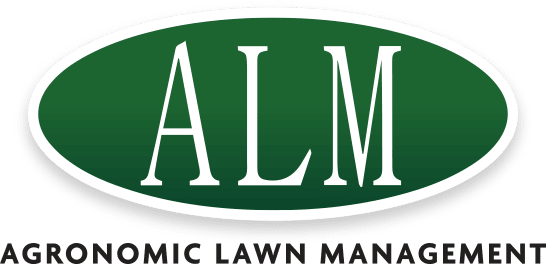How to Treat Gray Leaf Spot Disease in Virginia Lawns

Gray Leaf Spot (GLS) is a common fungal disease that affects turfgrass, particularly in humid and warm climates like those found across Virginia. With our unpredictable weather patterns and humid summers, lawn care in Virginia requires vigilant attention. If you're seeing thinning patches of grass or dark, water-soaked lesions with a gray center, it could be a sign of Gray Leaf Spot. This guide will walk you through the best ways to identify, treat, and prevent Gray Leaf Spot disease right here in Virginia.
Understanding Gray Leaf Spot in Virginia
Gray Leaf Spot thrives in regions like Virginia due to our frequent rain, high humidity, and fluctuating temperatures during the growing season. Warm-season grasses such as St. Augustine grass, commonly found in residential lawns throughout areas like Richmond, Norfolk, and Charlottesville, are particularly susceptible to this disease. The combination of the state's natural climate and soil conditions makes it a perfect breeding ground for GLS, especially during the late summer months when heat and humidity peak.
Signs of Gray Leaf Spot in Virginia Lawns
In Virginia, GLS tends to emerge during the late summer and early fall, when high humidity levels create ideal conditions for fungal growth. Keep an eye out for these key symptoms:
- Small, circular, water-soaked lesions on the grass blades.
- Gray or ash-colored centers of lesions with dark brown or purple borders.
- Yellowing and browning of the grass blades, leading to thinning patches.
- Rapid decline of the affected areas, especially after rain or periods of heavy moisture.
Because of Virginia’s climate, early detection and rapid response are critical to prevent the disease from spreading across your entire lawn.
How to Treat Gray Leaf Spot in Virginia
Once you've identified GLS in your Virginia lawn, it's time to take action. Here’s how to treat the disease effectively:
1. Stop Watering Immediately
Gray Leaf Spot thrives in moisture-rich environments. If you notice symptoms, it’s essential to reduce watering. In areas like Virginia Beach, where moisture from ocean breezes adds to lawn dampness, withholding irrigation during humid periods will help stop the spread.
2. Mow Correctly
Mowing too short can stress your grass, especially if it's already battling GLS. Keep your grass height a bit longer than usual, particularly in hotter areas like Roanoke, where heat stress may worsen the problem. Always use sharp blades, and avoid mowing when the grass is wet to prevent spreading the disease.
3. Fungicide Application
For homeowners in Virginia, using fungicides is often the most effective way to treat Gray Leaf Spot. You’ll want to apply a fungicide specifically designed to target GLS. Products containing azoxystrobin or propiconazole are especially effective. Be sure to follow application instructions carefully, paying attention to any local recommendations for Virginia-specific grass varieties. A fungicide treatment may need to be repeated every 14 days, particularly if humidity persists.
4. Fertilization
Avoid applying nitrogen-heavy fertilizers while your lawn is actively infected with gray leaf spot. High nitrogen levels can worsen the disease. Instead, opt for a balanced fertilizer suitable for the cool, humid conditions we experience across Virginia.
5. Aeration
In Virginia, soil compaction is a common issue due to our clay-heavy soil. Aerating your lawn helps improve airflow and drainage, reducing the moisture that GLS needs to survive. Fall, when the temperatures begin to cool, is an ideal time to aerate your lawn to help it recover.
Preventing Gray Leaf Spot in Virginia
The best way to combat Gray Leaf Spot Disease in Virginia is through prevention. Since Virginia’s climate is conducive to fungal diseases, a proactive approach to lawn care is key. Here's how to reduce the chances of a future outbreak:
- Proper Irrigation: Water your lawn in the early morning hours, allowing time for the grass to dry before evening. Avoid overwatering, particularly in high-humidity areas like Newport News and Williamsburg.
- Resistant Grass Varieties: Some grass types, such as improved cultivars of perennial ryegrass, are more resistant to GLS. If you're considering reseeding in Virginia, consult with a local lawn care professional to choose the best grass variety for your region.
- Seasonal Maintenance: Regular aeration, overseeding, and soil health checks are critical for Virginia homeowners. By promoting good airflow and reducing thatch, you’ll limit the moisture buildup that causes fungal growth.
Getting Rid of Gray Leaf Spot For Good
Gray Leaf Spot is a lawn disease that can quickly take over Virginia lawns, but with early identification and the right treatment plan, your turf can recover and thrive. Virginia’s humid summers make GLS more common, but by adjusting your lawn care habits to suit the local climate and soil conditions, you can protect your yard year after year.
If you're unsure about the health of your lawn or need help treating GLS, contact your Virginia-based lawn care experts in Chesapeake, Suffolk, Virginia Beach, and the surrounding communities at . With proper guidance and local knowledge, we can help your lawn get back to its lush, green self in no time! Contact us today!
